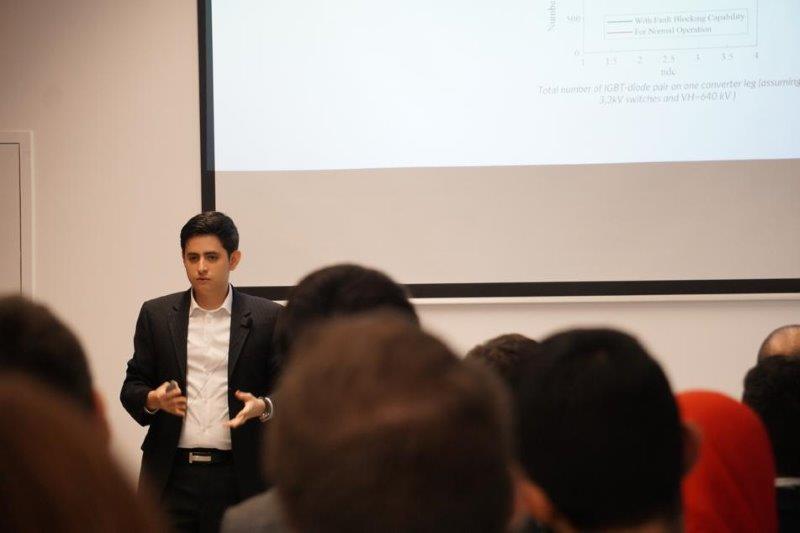Phd Juan PAEZ
“HVDC Converters for the interconnection of HVDC grids”

Abstract
In order to include large-scale renewable sources into the electrical system and to transport high amounts of energy through long distances, the actual AC grid must be upgraded. HVDC transmission grids appear as a promising solution to upgrade the system and answer correctly the future needs and requirements. The development of such grids can be done following two different approaches. For one side, a DC system designed totally from zero following a standardization of HVDC technology, and for the other side, an incremental evolution using the existing HVDC lines. The second approach seems more reasonable due to the reutilization of infrastructure, the inconvenient is that the technology used on each existing line is different. Thus, their interconnection will require DC¬DC converters as interface elements. These structures allow the interconnection of different HVDC schemes and offer more functionalities than only DC voltage adaptation like power flow control and protection.
In this thesis the detailed study of DC-DC converters for HVDC is addressed. A comprehensive review of the different conversion methods is first presented; where a classification is proposed and the main HVDC applications and requirements for each circuit are highlighted. Then, two converter topologies are studied in detail. One isolated circuit (the F2F-MMC) and one non isolated topology (the DC-MMC). For each circuit, the detail operation principles are analyzed and appropriate control methods are proposed. The grid integration of both converters is also addressed, studying the interconnection of two DC lines during normal and fault conditions. From this study, it is seen how, under normal conditions, both DC-DC converters can decouple both DC systems. It means that when a disturbance occurs on one DC grid, the other DC grid it is not disturbed. The capabilities of blocking DC fault currents for both topologies and the impact on the DC grid are also analyzed. It is observed that after the fault, both DC-DC converters stop the propagation of the fault current but generating a DC voltage disturbance on the healthy sub-grid due to the abrupt loss of power. A control method for decreasing this disturbance is proposed, using the internal converter energy. Finally, a general methodology to assess the comparison of diverse HVDC converter topologies is proposed. It is based on three performance indicators related with capital and operational expenditures. The methodology is analytic, except for the switching losses. The detailed analysis on the estimation of the switching losses is performed and a new method is proposed, however it requires the detailed model simulation of each circuit. The comparison methodology is applied to both DC-DC converters revealing the potential region of interest for each converter. The results show that the DC-MMC has a high potential for low voltage transformation ratio applications and medium frequency operation, while the F2F-MMC is more adapted to high voltage transformation ratios but is still a non-cost-effective solution.
Thesis director:
Seddik BACHA


